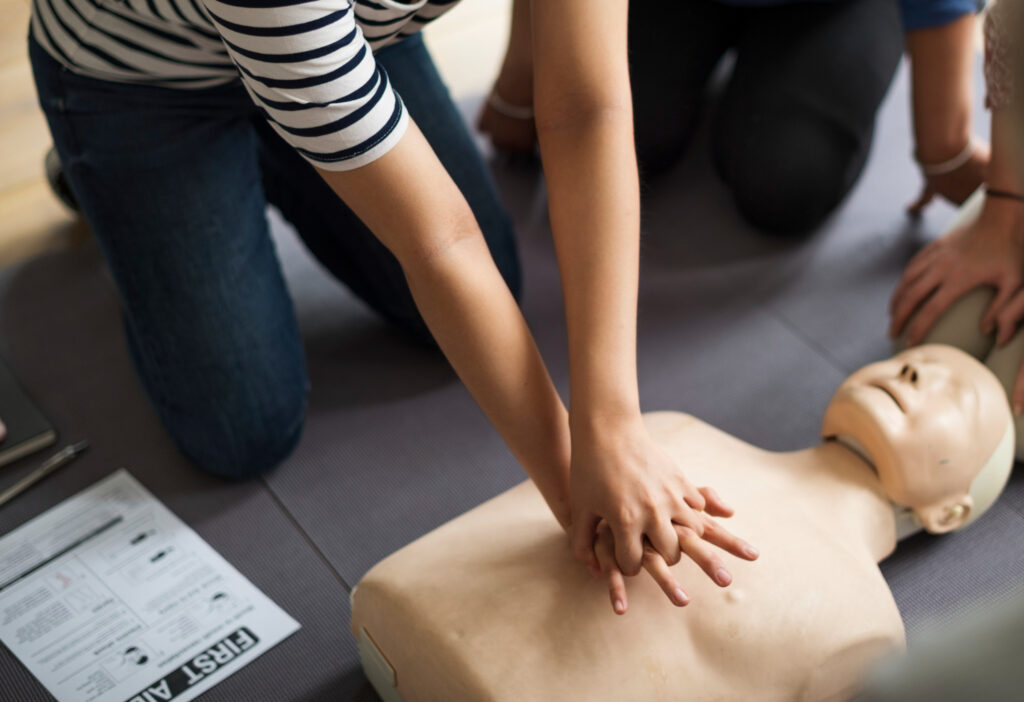Step-by-step guide to performing CPR
Cardiopulmonary resuscitation (CPR) is a hands-on emergency intervention used to restore breathing and a heartbeat in a person who has gone into cardiac arrest. Common causes of cardiac arrest are a heart attack or near-drowning.
CPR involves performing chest compressions and, in some cases, “mouth-to-mouth” (rescue) breathing. These techniques can keep blood flowing to the brain and other organs until medical help arrives.
Steps to take if someone needs CPR
The American Heart Association advises a slightly different CPR technique depending on your level of training:
- For trained persons: Check for a pulse and breathing. If there is none within 10 seconds, use a CPR compression rate of 100 to 120 per minute, in cycles of 30 compressions followed by two rescue breaths. Repeat the sequence until the person starts breathing.
- For untrained or trained persons unsure of their abilities: If you fall in this category, then use hands-only CPR. This technique involves uninterrupted chest compressions of 100 to 120 per minute. You do not include rescue breathing with this technique, but you shouldn’t stop CPR until a healthcare provider arrives or a pulse is restored.
Steps to take before performing CPR
In an emergency, time is essential. Follow these steps before you attempt CPR on someone:
- Ensure the environment is safe.
- Try to wake the person. Move on to the next steps after five seconds of trying to wake the patient.
- Call emergency care.
- Put the person on their back.
- Check for breathing. Tilt the patient’s head back to open the airway and determine if they are breathing.
- Start CPR if the patient doesn’t take a breath after 10 seconds.
How to do CPR by age
CPR techniques vary slightly based on the age of the person. From adults to toddlers and infants, there is a notable difference.
For adults and children from 1-8 years old
These steps apply to adults and children over 8 years old.
- Place your hands on the person’s chest. Picture a line between the nipples and put the heel of one hand directly on that line, in the centre of the chest (i.e., the sternum). Place your other hand on top of that hand. Centre your weight directly over your hands.
- Perform chest compressions. Push hard, to a depth of at least 2 inches (but no deeper than 2.4 inches) and fast—about twice per second until the person responds. Your hands shouldn’t bounce, but you should lift your entire body weight off the patient in between each compression.
- Give rescue breaths. If you have had training and feel comfortable performing the steps, push on the chest 30 times, then give two rescue breaths.
- Repeat. Repeat cycles in the ratio of 30:2 (chest compressions and breaths) until help arrives or the patient wakes up.
For infants from 1 year and below
- Flick the bottom of the foot to elicit a response. This takes the place of shaking the shoulders of an older person.
- Place two fingers of one hand in the centre of the chest.
- Give chest compressions. Gently use your fingers to compress the chest about 1.5 inches deep. Perform two compressions per second, just as you would when giving an adult CPR.
- Perform rescue breathing. If you are comfortable giving rescue breaths, give two of them between each series of 30 chest compressions, just as you would with an older person.

